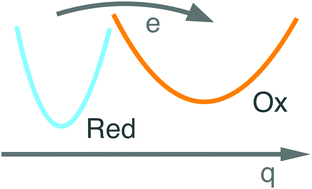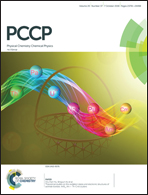Q-model of electrode reactions: altering force constants of intramolecular vibrations
Abstract
A theory of redox reactions involving electron transfer between a metal electrode and a molecule in solution is formulated in terms of two types of nuclear coordinates of the thermal bath: electrostatic polarization of the medium and local low-frequency vibrations. The polarization fluctuations follow Gaussian statistics. In contrast, the vibrational coordinate is allowed to change its force constant between two oxidation states of the reactant, which is projected onto non-Gaussian fluctuations of the reactant's electronic states. A closed-form analytical theory for the electrode redox reactions is formulated in terms of three reorganization energies: the reorganization energy for the electrostatic polarization of the medium and two internal (vibrational) reorganization energies for the reduced and oxidized states of the reactant. The theory predicts asymmetry between the cathodic and anodic branches of the electrode current driven by the corresponding difference in the vibrational force constants.



 Please wait while we load your content...
Please wait while we load your content...